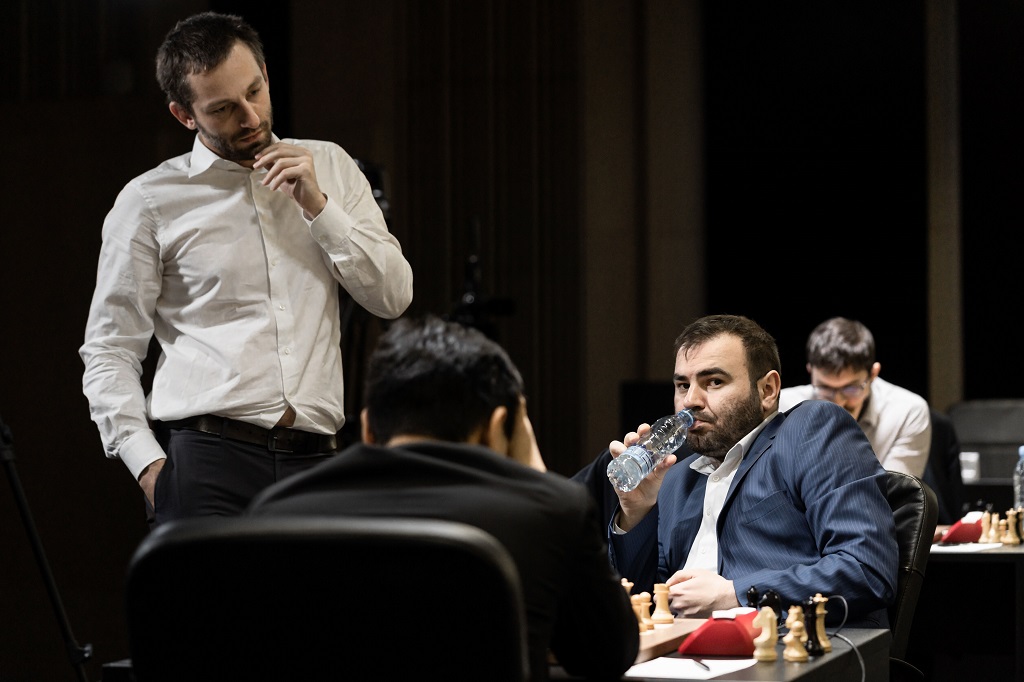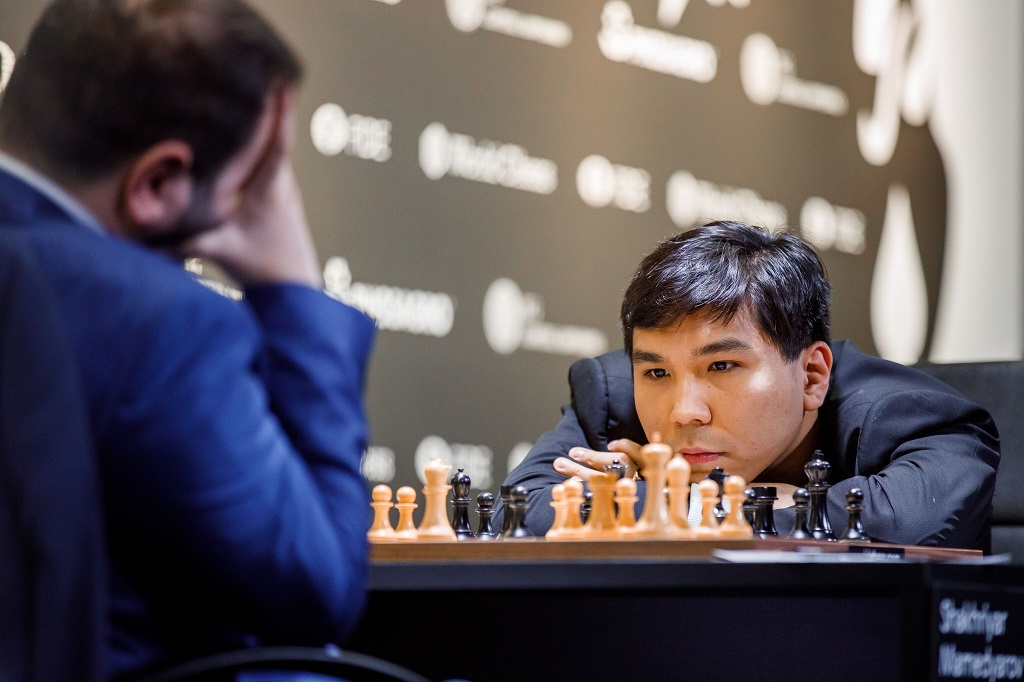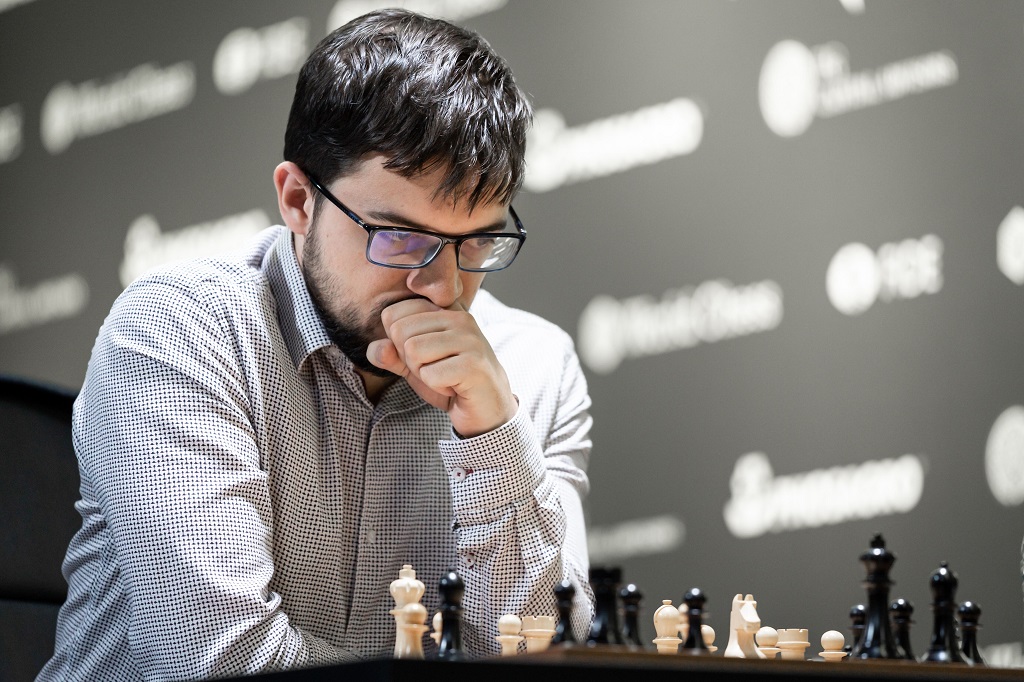


ChessBase 17 - Mega package - Edition 2024
It is the program of choice for anyone who loves the game and wants to know more about it. Start your personal success story with ChessBase and enjoy the game even more.
At the end of the twentieth century, when Garry Kasparov was dominating the chess elite, the best players in the world were looking for theoretical ways to 'solve the game'. To find surprising novelties was a huge commodity, with certain openings more prone to be explored by those following this 'scientific approach' — the Berlin and the Catalan were among these systems (in fact, one of the biggest advocates to this approach, Vladimir Kramnik, studied both of them deeply).
On day one of the semi-finals, Shakhriyar Mamedyarov uncorked a nice novelty in the Catalan to get a comfortable win over Wesley So, while Alexander Grischuk got himself in trouble from the black side of a Berlin Defence against Maxime Vachier-Lagrave, but managed to save a draw in the end.
Click or tap any result to open the game via Live.ChessBase.com

Alexander Grischuk looking on his potential contenders | Photo: Niki Riga / World Chess
The Azerbaijani went for a sharp line of the Catalan, in which White is a pawn down but gets the pair of bishops and cripples Black's pawn structure. As so often happens in this opening, the theoretical lines are lengthy and specific. This time, Mamedyarov was the first one to deviate:
Master Class Vol.11: Vladimir Kramnik
This DVD allows you to learn from the example of one of the best players in the history of chess and from the explanations of the authors (Pelletier, Marin, Müller and Reeh) how to successfully organise your games strategically, consequently how to keep y
The novelty was the quiet 14.a3, which nonetheless prompted So to invest around fifteen minutes on 14...♜fb8. Later on, Mamedyarov mentioned that the American had told him in the post-mortem discussion that he considered his fourteenth move to have been a mistake, but the Azeri — who remembered this line completely — clarified that So's move was actually the best one in the position.
The mistake came after 15.e4:
So now spent twenty minutes on 15...c3, the crucial mistake. Mamedyarov seemed worried, as he thought he had every line analysed in full, except this one. But, in fact, he had not memorized it because it gave White too much of an advantage.
After explaining that this will probably be a 'one-off novelty', Mamedyarov noted that after e4 Black has the strong 15...♞xe4 — the point of this move is that after the long sequence 16.♗xe4 ♛xd4 17.♗e3 ♛xe4 18.♗xb6 ♜xb6 19.♖fe1 Black has the unexpected 19...♛g6.
We certainly cannot blame So for not having seen this line from afar, as the more natural-looking 19...♛c2 or 19...♛f3, for example, are bad for Black.
After the text, it did not take long before the queens left the board. From that point on, Mamedyarov showed fine technique to prove his pair of bishops was stronger than Black's rook. Resignation came on move 34.
Power Play 24: A repertoire for black against the Catalan
On this DVD Grandmaster Daniel King offers you a repertoire for Black against the Catalan, based around maintaining the rock of a pawn on d5. Keeping central control ultimately gives Black good chances to launch an attack against the enemy king.

It is tough to be an elite chess player — Wesley So knows it all too well | Photo: World Chess
Two well-established members of the elite explored the notorious Berlin Defence and followed a Vachier-Lagrave v Aronian game from the 2018 London Chess Classic until move 12. Grischuk himself spent some time — as usual — before going for the novelty of the game:
The players started figuring things out over the board after 12...a5, and things seemed to be going well for Black until Vachier-Lagrave's 21st move:
The problem with 21.♖d3 is that Grischuk had not foreseen it, while he already thought it was only a matter of time before a draw would be agreed. The Russian, in fact, spent over half an hour before finding the correct plan to defend against White's initiative — to advance on the queenside with 21...b5, 22...b4, 23...a4.
Grischuk kept pushing his queenside pawns later on:
The game continued 26...b3 27.cxb3 axb3 28.a4 c5 29.a5 c4 30.a6 c3 and the point was split three moves later. Both players were not sure whether White had some study-like win at some point, but certainly Vachier-Lagrave was the one with the chances.
How to crack the Berlin Wall with 5.Re1
Alexei Shirov shows on this DVD how White can develop pressure and seize the initiative with 5.Re1 against the Berlin Wall.

Maxime Vachier-Lagrave | Photo: Niki Riga / World Chess
A Classical Guide to the French Defence
This DVD gives you the key to start out with the French Defence. GM Yannick Pelletier is a specialist of this opening, and believes that the most efficient way to understand its ideas, plans, and typical structures is to study classical lines.
Commentary by GMs Evgeny Miroshnichenko and Arturs Neikans